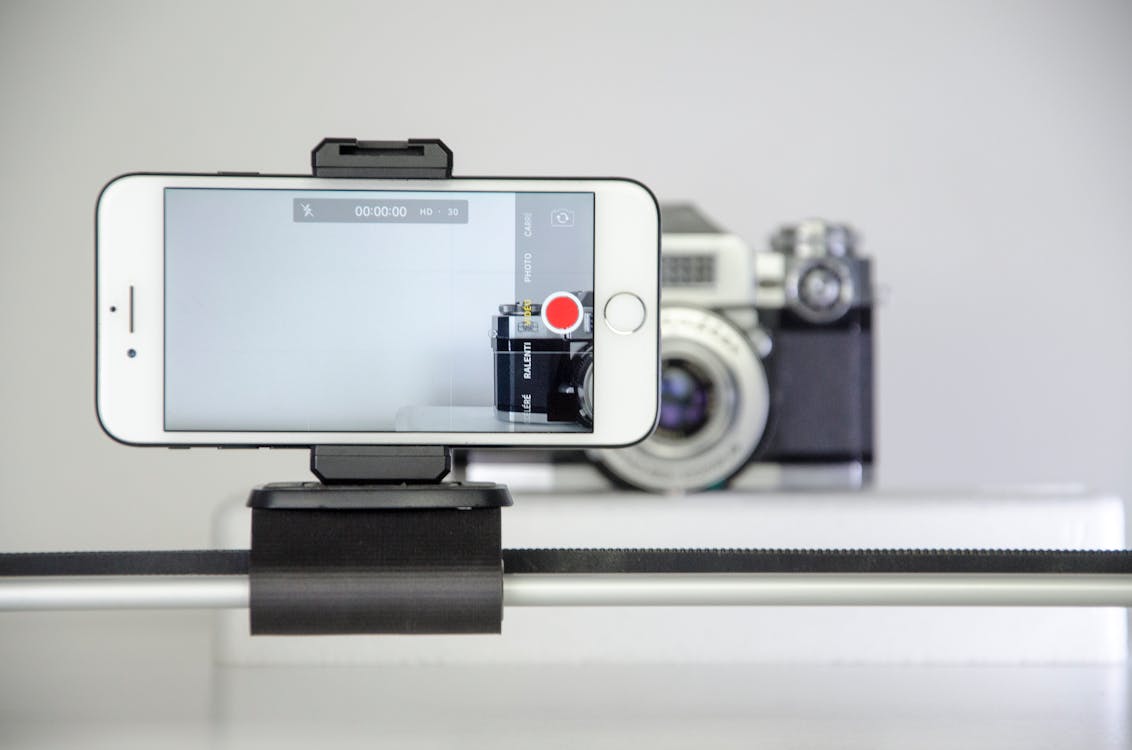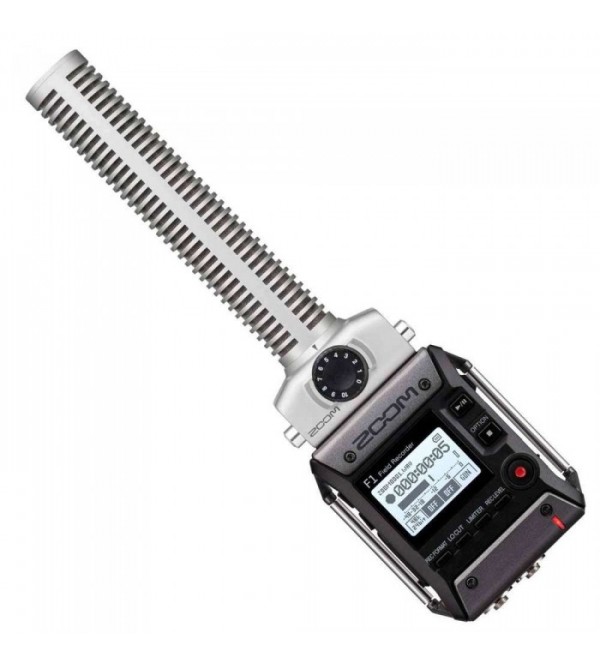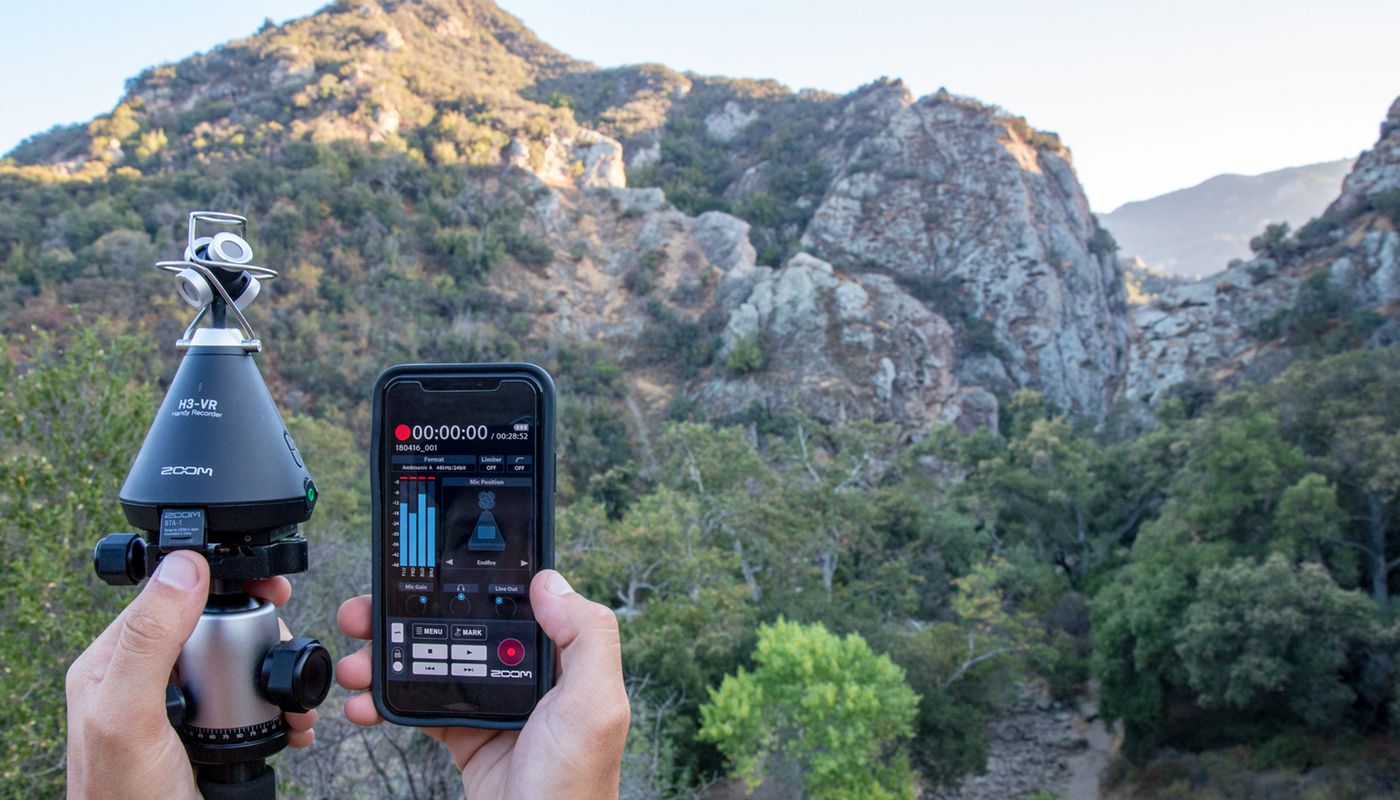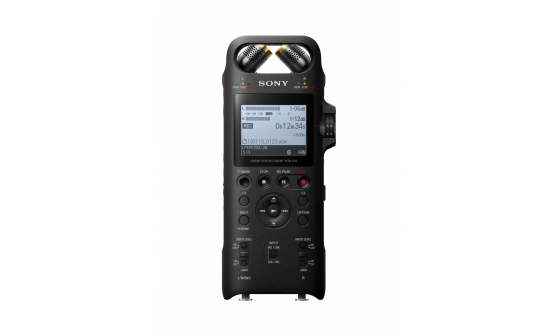+ Ryan Lott (of Son Lux) teaches how to build custom virtual instruments for sound design and scoring in Designing Sample-Based Instruments.
Whether you’re collecting material for sound design, gathering samples for your next beat, or just love to appreciate the ambience of nature, field recording is a worthy pastime for anyone who loves sound.
But when you start looking at all of the field recorders and microphones available, the choices can be overwhelming.
To make your choice easier, we’ve selected 10 of the best options from the industry’s most trusted brands, from pocket-sized recorders with built-in mics to professional rigs with multiple mic inputs and advanced features.
1. Your Phone (Seriously!)

Provided you have a relatively modern phone, you might be surprised at its recording quality. It won’t be professional quality, but in most cases it should be usable for on-the-fly recording and capturing quick samples for sound design and music production. There are many recording apps available for both Android and Apple phones, so be sure to choose one that offers high-resolution recording (at least 24-bit/48 kHz), can switch between mono or stereo, and lets you select a specific folder to store your recordings.
2. Zoom H1n

“Handy Recorders” are Zoom’s specialty, and the H1n is one of their best values yet. Its built-in stereo microphones and simple controls make it a snap to whip out and record in the moment, while its pocket-friendly size means you can have it on you wherever you go. Extra features like a low-cut filter, limiter, auto recording, and a ⅛-inch mic/line input make this tiny device perfect for those wanting to get into field recording on a budget.
+ Read more on Flypaper: “Bernie Krause on Preserving the Voices of the Wilderness Before They Disappear Forever.”
3. Tascam DR-07X

Tascam has a long history of making affordable consumer and prosumer recording devices, and their DR-07X handheld recorder is a solid entry-level choice for amateur field recordists. Its onboard mics can be easily repositioned to record in tight or wide stereo patterns, making it a bit more versatile than the Zoom H1n at the cost of slightly larger (but still pocket-friendly) size.
4. Sony PCM A10

Sony’s entry in the pocket-sized category has all the features you’d expect, including repositionable onboard stereo mics, simple controls, and high sample rate recording (up to 96 KHz/16 bits or 48 kHz/24 bits). The Rehearsal function automatically sets the proper input level after a quick test, and features such as Bluetooth capability and smartphone control expand its utility. The pop-out USB connector makes file transfer incredibly easy.
+ Learn how to marry theory, improvisation, and beat making to become a better pianist and producer, with Grammy-winner Kiefer’s Keys, Chords, & Beats.

5. Zoom F1-SP

Designed for use with cameras, the Zoom F1 is equally capable as a standalone field recorder. Thanks to its tiny form factor, the F1 is perfect for keeping with you at all times, and it’s easy to operate so you can be recording in seconds. Use the included shotgun mic attachment to capture up-close sounds, equip other Zoom capsules you own, or use the ⅛-inch input with an external mic.
6. Zoom H3-VR

If you want to make immersive field recordings, this all-in-one Ambisonic microphone and recorder is perfect. With four microphone capsules, the H3-VR captures sound coming from all directions and encodes it to Ambisonic files which you can decode with software to a variety of formats from binaural to immersive surround or plain old stereo. Excellent recording quality and long battery life make the H3-VR great for immersive field recording.
+ Read more on Flypaper: “Why Do Birds (Actually) Sing?”
7. Tascam Portacapture X6

Made for those without much recording experience who still want to capture high-quality sound, the Portacapture X6 emphasizes usability without sacrificing sound quality. The full-color touchscreen operates like a tablet or smartphone, making it easy to adjust settings and choose quick presets for field recording, music, speech, and more. Onboard stereo mics plus two XLR inputs give you plenty of connectivity, and the larger X8 provides even more.
8. Zoom F3

One of the first portable recorders to offer 32-bit float recording, the Zoom F3 is ideal for recording extremely dynamic sounds in high resolution without clipping. Small but rugged, the F3 is a favorite on-the-go rig of professional recordists, and it can attach easily to a camera, tripod, boom pole, or microphone pistol grip. The only drawback is that it has no onboard mics, just two full-sized XLR inputs.
9. Sony PCM D10

The big sibling of the A10, the Sony PCM D10 is a professional-grade handheld recorder that features high-quality onboard stereo mics as well as two XLR inputs for external microphones. Though its control panel is a bit more dense than the A10, you’ll find that the D10 has all the features and flexibility you need to capture detailed recordings in almost any situation.
+ Read more on Flypaper: “10 of the Most Interesting Field Recordists Working Across Aesthetic Boundaries.”
10. Sound Devices MixPre 3 II

If you’re serious about field recording, Sound Devices is one of the most trusted names in high-end recorders. Three mic inputs allow you to use multi-mic arrays such as double mid-side for surround recording, and the preamps are some of the best available on a portable recorder. The front-panel controls are incredibly easy to operate, but under the hood, the MixPre 3 II packs a ton of useful features like onboard mixing, audio interface functionality, and 192 kHz/32-bit recording.
Don’t stop here!
Continue learning with hundreds of lessons on songwriting, mixing, recording and production, composing, beat making, and more on Soundfly, with artist-led courses by Kimbra, Com Truise, Jlin, Kiefer, and the new Ryan Lott: Designing Sample-Based Instruments.




